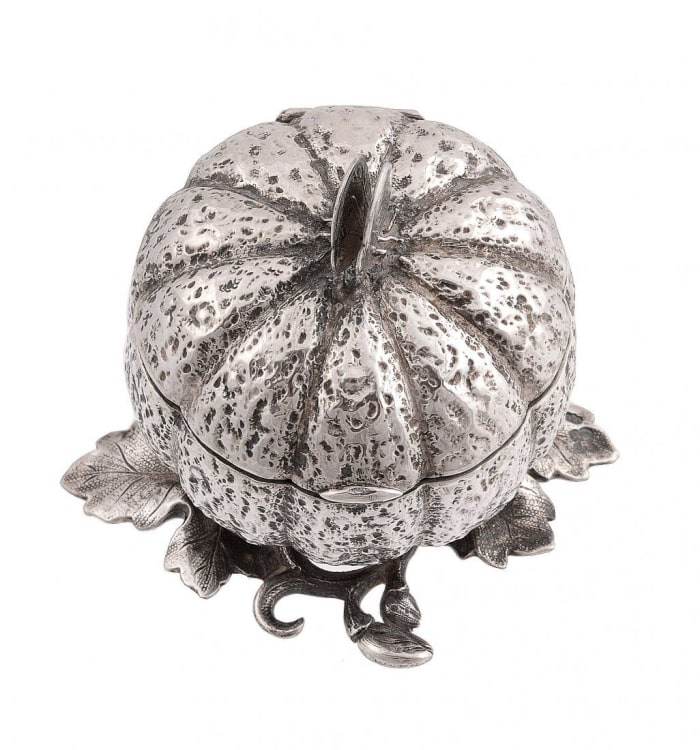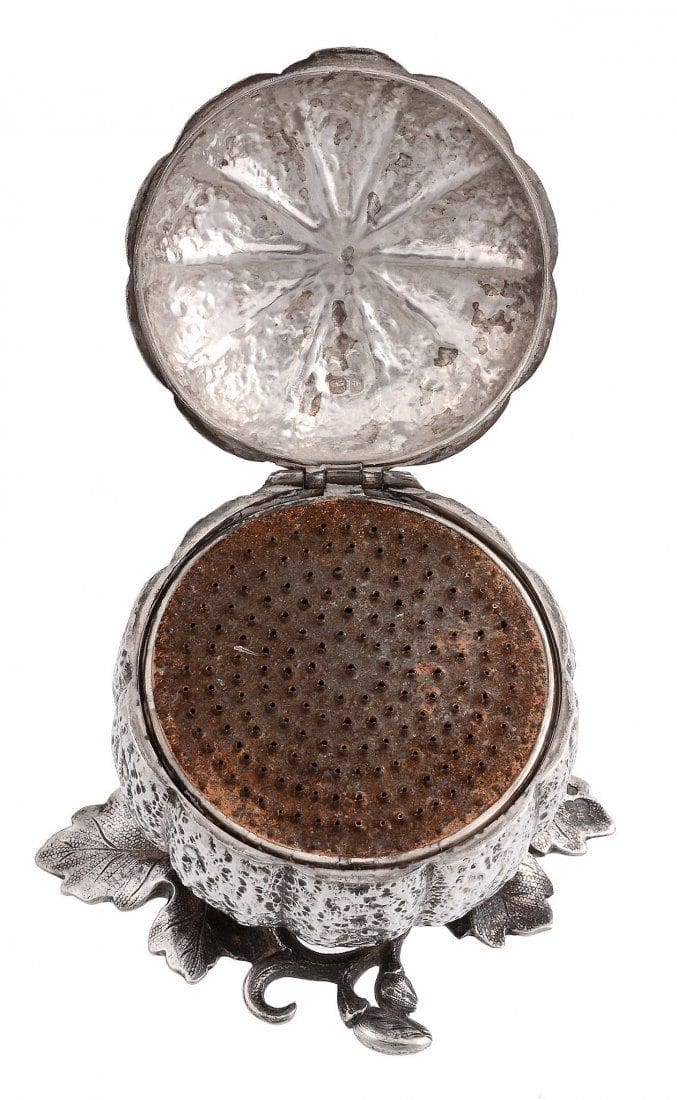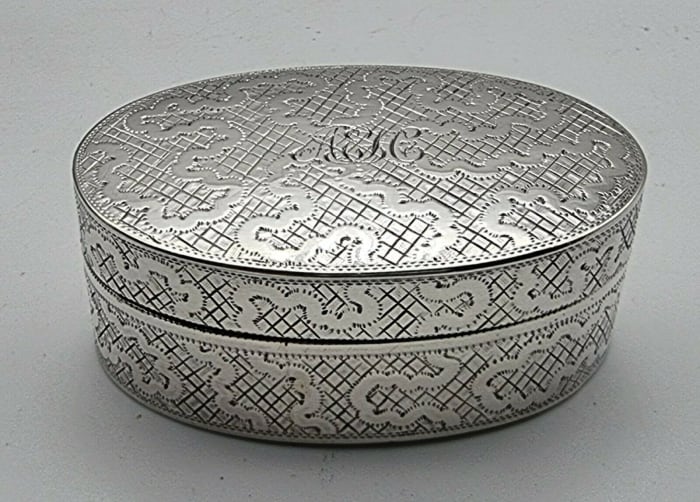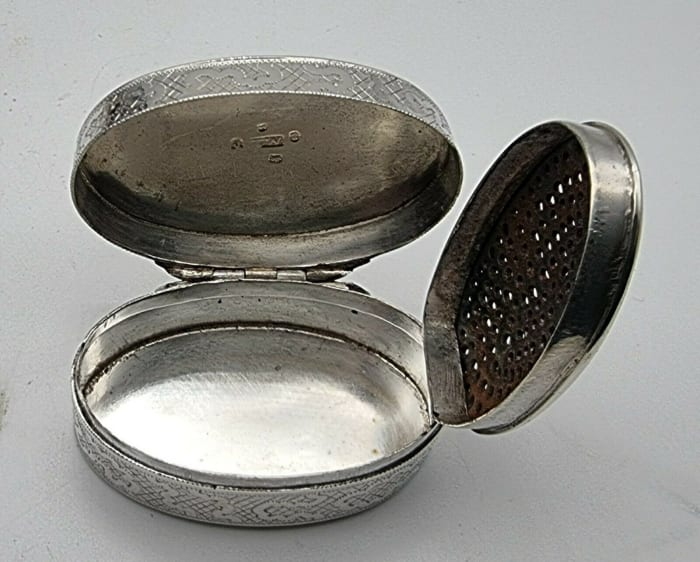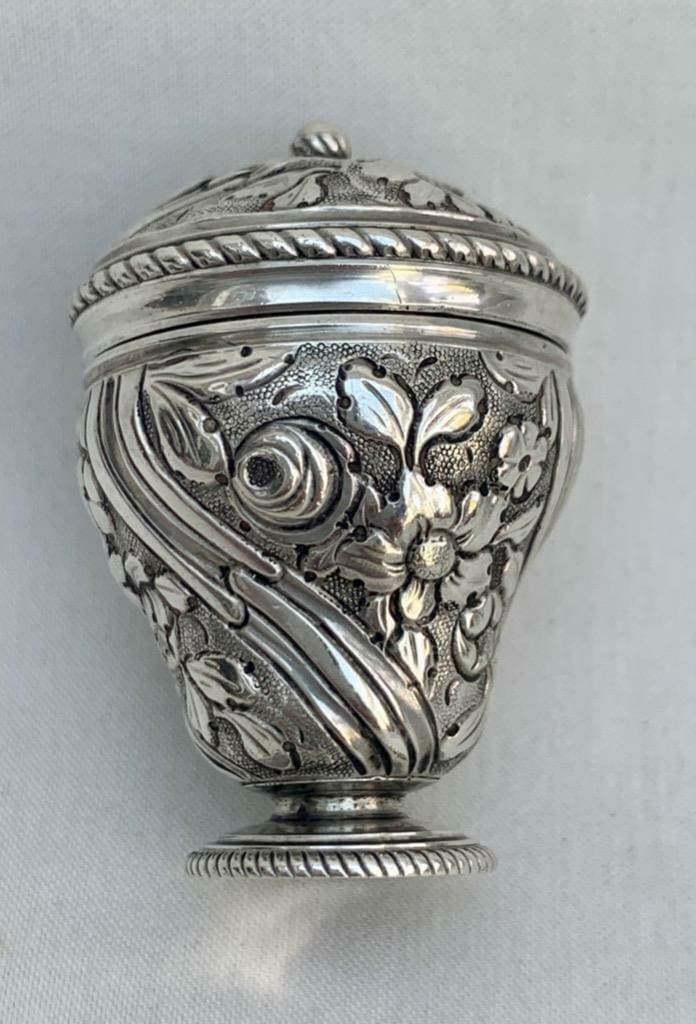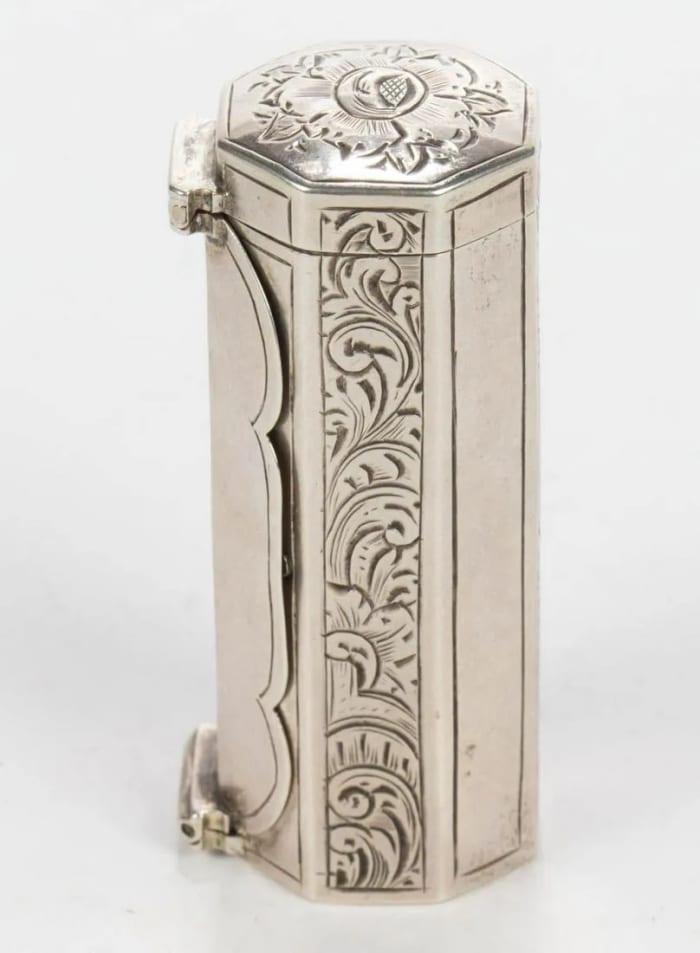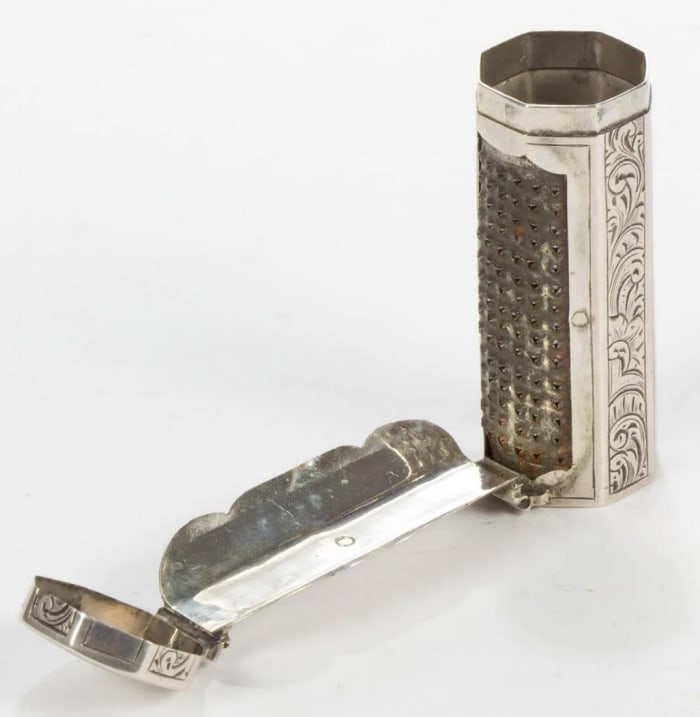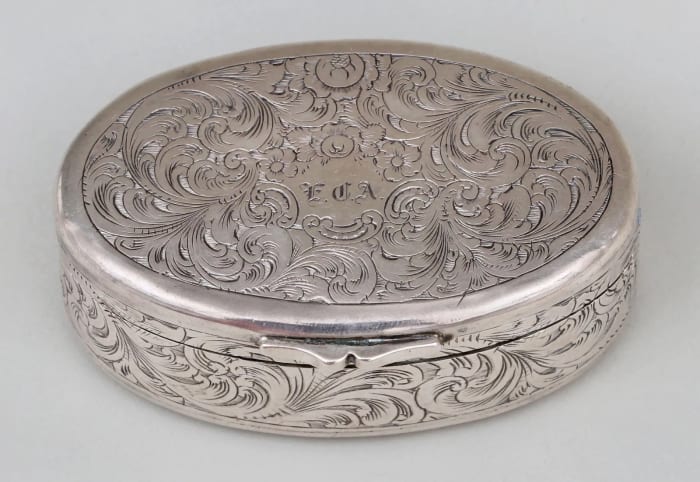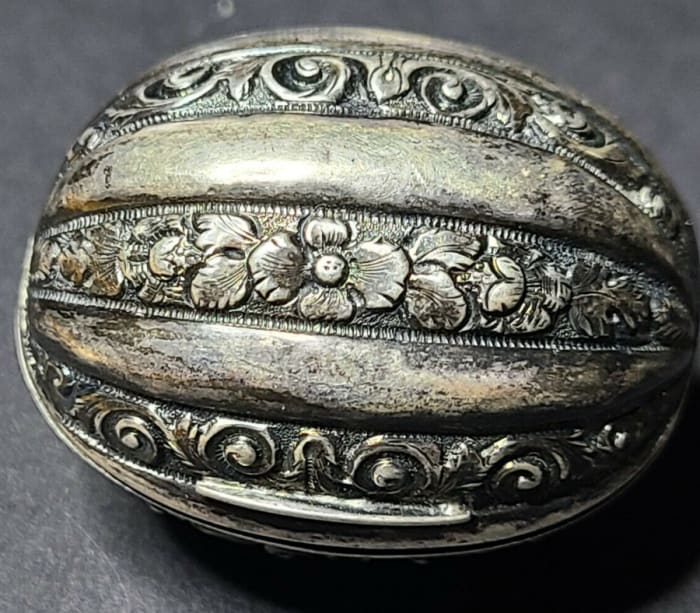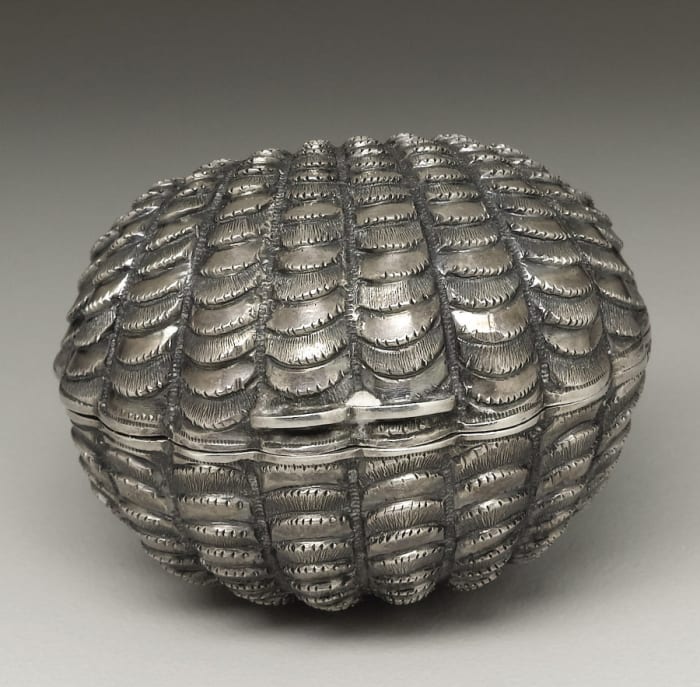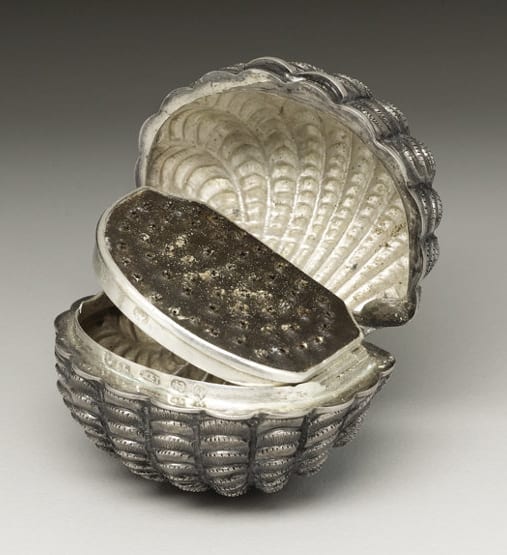One of the most popular spices with Europeans at the time of what is generally accepted as the first Thanksgiving in 1621 in Plymouth was nutmeg.
Now an iconic holiday spice, nutmeg may seem humble and unassuming — something you add to a savory dish or cake to give it a warm note — but it has quite a colorful and dark history that includes espionage, battles and lots of murders. It was also super pricey. In the 14th century, half a kilogram of nutmeg cost as much as three sheep or a cow. In 1760, the price of nutmeg in London was 85 to 90 shillings per pound, a price kept artificially high by the Dutch. One of the reasons nutmeg was so valuable and costly is because it took five years for the seeds to grow. A check online shows that today the price for whole nuts can range from $4 to $6 for two ounces to $625 for 50 pounds.
Nutmeg was highly coveted and revered by wealthy and fashionable people, so much so that they carried around their own pocket-sized nutmeg graters to add a dash of the spice to anything at any time, which was usually punch and other beverages. These graters are now valuable collectibles.
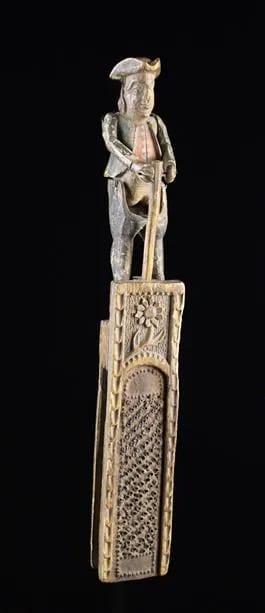
A rare 18th century carved and polychrome automata nutmeg grater, possibly a reference to the East Indian spice wars. The pierced sheet iron rasp set in a carved frame decorated with a daisy and surmounted by an articulated figure of man wearing a tricorn hat pounding a pole, with his trousers dropping to expose his backside when bending, 10-1/2” h; $7,760.
Courtesy of Wilkinson’s Auctioneers
Nutmeg did not start out as a culinary spice associated with mulled wine and winter holidays. As early as the Middle Ages, nutmeg was imbued with medicinal properties. Herbalist John Gerard wrote in 1597 that nutmeg “is good against freckles in the face, quickneth the sight, strengthens the belly and feeble liver, taketh away the swelling of the spleen … breaketh wind, and is good against all cold diseases of the body.”
It was also thought to possess mystical healing powers, and it can induce hallucinations. Dating back as far as the 12th century, nutmeg has been used in waves as a drug, snorted, smoked, and eaten in large quantities to produce a hallucinogenic high. It has been likened to feeling like a two-day hangover and being encased in mud. There have been many warnings issued about it even today.
A New York Times blog from 2014 giving a warning about nutmeg said that people using it as a drug consume two tablespoonfuls before showing signs of intoxication. While there aren’t many recorded cases of nutmeg causing death, it’s better to err on the side of caution when it comes to how much you use and measure it carefully.
According to nutmeggraters.com, a site that spotlights the forgotten history of nutmeg and the nutmeg grater, the only source of nutmeg and mace in the early centuries was Indonesia — specifically Banda Islands. Arabian spice caravans carefully guarded this source and were the ones to carry nutmeg to Eastern Europeans. In 1511, though, while sailing the high seas on a mission to find riches, the Portuguese were the first Europeans to arrive at the Banda Islands. Portugal enjoyed the exclusive trade in nutmeg to Western Europe for a century.
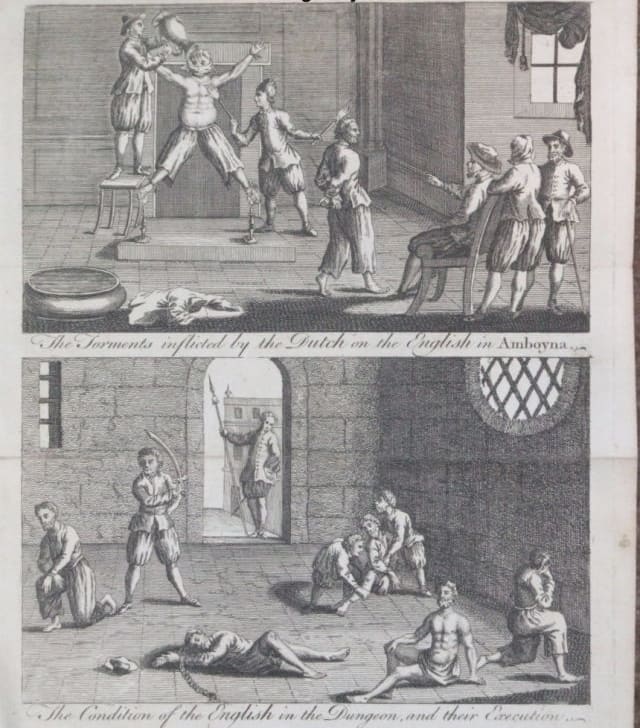
This copper engraving from approximately 1700 depicts the condition of the English prisoners at the hands of the Dutch. In the 1660s, the conflict and competition for the spice trade came to a head, with the Dutch murdering a number of merchants who were also in the Spice Islands trying to profit from the trade.
Wikimedia Commons/public domain
In the seventeenth century, Dutch traders also arrived in Indonesia and used coercion to create a monopoly with cloves, nutmeg and mace and marketed their precious spices at monstrous profits to an eager public in Europe, the Orient and North America.
“A cut-throat competition for both the lucrative spice trade, and for possession of the spice plant itself, led to terrifying acts of piracy, murder and maritime smuggling. First the French, and then the English, successfully transplanted sapling nutmeg trees, initiating nutmeg plantations throughout the Indian Ocean and Caribbean. By the beginning of the nineteenth century, the Dutch spice monopoly faltered,” according to nutmeggraters.com.
Nutmeg Graters Become Fashionable
There have been many different designs of nutmeg graters over the centuries. Some involve rubbing the nutmeg over a grating surface, while others involve turning a handle to cause the grating.
The earliest nutmeg graters in modern times originated in the early 1600s in England. Only the wealthiest had them, as they were the ones who could afford nutmeg in the first place.
Pocket graters for gentlemen to include in their traveling tableware sets emerged in the mid-1600s. The first ones were just cylindrical silver graters, with a solid silver tube acting as a case to store them in. Later, elaborately decorative ones emerged made from silver, gold, ivory, brass, and enamel.
Nutmeg became popular among the 17th and 18th century upper class and started being used more for culinary purposes to flavor alcoholic beverages, such as punch, wine and cider. Hannah Glasse’s The Art of Cookery, published in 1747, had everything from eggs, lettuce and truffles to beans, fish, pudding and buns seasoned with nutmeg.
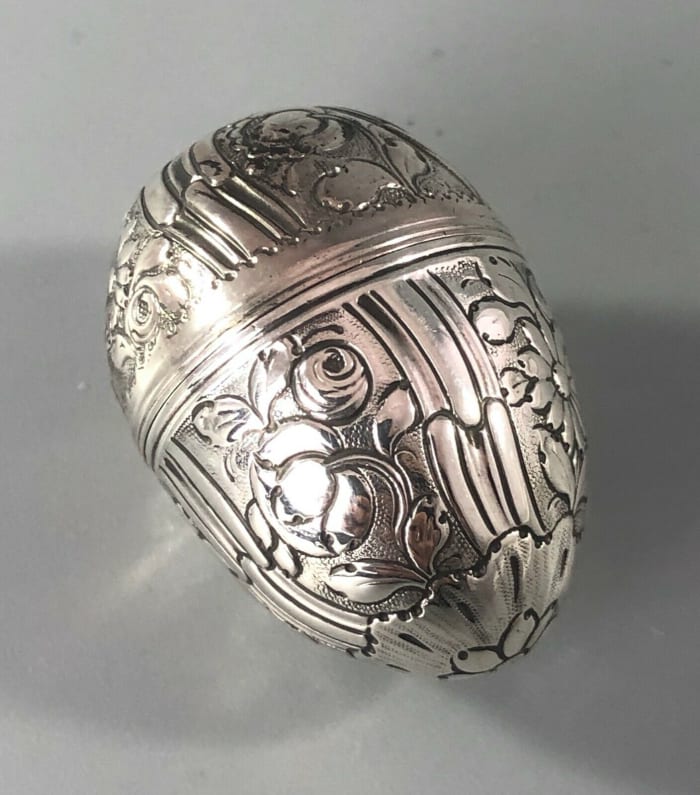
Egg-shaped George III silver nutmeg grater, hallmarked for Samuel Meriton, London, circa 1780, around 1-1/2” x 1”; $643.
Courtesy of eBay seller stevew520
It was a status symbol of extreme wealth to have a nutmeg grater and it was fashionable for gentlemen to carry a personal supply of the spice and a small grater tucked into a vest pocket, which also showed off their sophistication. When he wanted to flavor something, a gentleman would simply unscrew the two pieces of the grater and grate the seed against the steel teeth, shaking some of the spice into his food or drink — and likely impressing any ladies watching.
“Nutmeg graters first appeared in the mid-17th century, with greater refinement in dining and a wider ownership of silver for the table. They were either carried in the pocket or included in a travelling canteen that might also contain cutlery, a beaker and a corkscrew. The graters reached the height of their popularity in the next century,” according to the Victoria and Albert Museum. “Cheaper, thinner gauge silver, new manufacturing techniques and greater prosperity led to an enormous growth in items of small personal silver. Nutmeg graters were then made in a variety of forms, from cylindrical, circular or oval boxes to more unusual designs such as hearts or shells, to express the owner’s taste and individuality.”
Depending on the style and material, antique nutmeg graters can be found today for under $100 to thousands of dollars for rare and fancy ones made of silver.
The next time you sprinkle some nutmeg over your glass of eggnog, give a little toast to the humble spice with the colorful past.
Here is a sampling of antique nutmeg graters that have sold recently at auction and online:


